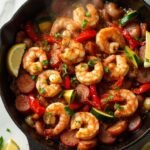
When it comes to Mexican food, people often discuss burritos and enchiladas. Each has its own special features. Burritos come from northern Mexico and are wrapped in flour tortillas. Enchiladas, with corn tortillas and sauce, trace back to the Aztec culture. They include delicious meats, beans, salsas, and cheeses. But, burritos and enchiladas provide very different eating experiences.
- Burrito and Enchilada: Understanding the Basics
- The Originals: Burrito Vs Enchilada Origins and Evolution
- Ingredients and Flavors: A Dive into Burrito Enchilada Variations
- Regional Twists: How Burritos and Enchiladas Vary Across Locations
- Burrito Vs Enchilada: What’s the Difference? A Side-By-Side Comparison
- Conclusion
- Burrito and Enchilada: Understanding the Basics
- The Originals: Burrito Vs Enchilada Origins and Evolution
- Ingredients and Flavors: A Dive into Burrito Enchilada Variations
- Regional Twists: How Burritos and Enchiladas Vary Across Locations
- Burrito Vs Enchilada What’s the Difference?: A Side-By-Side Comparison
- Conclusion
- FAQ
Burrito and Enchilada: Understanding the Basics
Burritos offer a complete meal in a flour tortilla. You can find them filled with a variety of ingredients. For example, the San Francisco burrito is packed with fillings. The San Diego version focuses on guacamole, Pico de Gallo, and meat. Enchiladas, however, are meant to be shared. They are often served with utensils due to their saucy nature.
The Originals: Burrito Vs Enchilada Origins and Evolution
Historically, northern Mexico offered simple bean and vegetable burritos. Meanwhile, California’s Mission-style burritos are more complex. Enchiladas have been around since Aztec times. They are made with corn tortillas and filled with beans, meat, and cheese, known for their sauce.
Ingredients and Flavors: A Dive into Burrito Enchilada Variations
The ingredients play a big role in defining each dish. Enchiladas often have just a few ingredients in their filling. Burritos, on the other hand, can have many different fillings. This includes guacamole, cheese, grains, and vegetables. Each bite of a burrito tells a story of flavors and textures.
Regional Twists: How Burritos and Enchiladas Vary Across Locations
Location influences how dishes are made and enjoyed. Tex-Mex enchiladas are covered in cheddar cheese. San Francisco’s burrito is known for its size and variety of ingredients. This reflects California’s role in food fusion.
Burrito Vs Enchilada: What’s the Difference? A Side-By-Side Comparison
Mexican cuisine is deep and varied. Each dish provides insight into Mexico’s history and culture. Choosing between a burrito and an enchilada depends on what you’re in the mood for. Do you want a hand-held meal or something covered in sauce?
Conclusion
No matter if you prefer burritos or enchiladas, Mexican cuisine’s depth is clear. Understanding their history and variations helps us appreciate this culinary art. It’s an adventure in taste and culture.
Key Takeaways
- The debate of burrito vs enchilada holds a significant spot in Mexican culinary tradition, each with unique historical and cultural significance.
- Flour tortillas are a staple for burritos, coming in larger sizes and stuffed with a broader range of fillings compared to enchiladas.
- Enchiladas are marked by their use of corn tortillas and a generous serving of flavorful sauce, typically enjoyed with utensils.
- Regional variations, like the Mission-style burritos of California and Tex-Mex enchiladas, showcase the adaptive nature of these dishes.
- Understanding the core differences in fillings and preparations between the two can enhance the dining experience for enthusiasts of Mexican cuisine.
Burrito and Enchilada: Understanding the Basics
Ever wondered the difference between a burrito and an enchilada? Let’s dig into what sets each apart. Knowing the basics helps us see why people prefer one over the other. This depends on ingredients and personal tastes.
What Defines a Burrito?
A burrito wraps a variety of fillings in a large flour tortilla. It includes meats, beans, cheese, and veggies. Originating in Mexico, it’s grown in size and variety in the U.S. For example, American burritos often add rice, guacamole, sour cream, and salsa. This makes them bigger than their Mexican originals.
In the U.S., burritos can also have things like seafood or vegan options. This variation caters to different dietary needs.
Identifying an Enchilada
An enchilada, meanwhile, uses a smaller, corn tortilla. It wraps around fillings, usually meat, and is covered in chili pepper sauce. The corn tortilla makes it a gluten-free choice, good for those avoiding gluten. Enchiladas are baked. This blends the filling and sauce together into a tasty dish that’s eaten with utensils. It’s different from the burrito, which you can hold in your hand.
To sum up, burritos and enchiladas both come from the same culinary world. They include ingredients like meats and cheeses. Your choice might depend on whether you prefer a flour or corn tortilla. And whether you like your food covered in sauce or ready to eat on the move. Each dish has its unique flavors and textures, showing the versatility of Mexican cuisine.
The Originals: Burrito Vs Enchilada Origins and Evolution
The story of burrito enchilada origins explores the deep roots of Mexican cuisine. It looks back to when these dishes were just ideas in traditional cooking. Understanding burrito versus enchilada means knowing their history and where they come from. The burrito started in northern Mexico as a simple meal. It was just a wheat tortilla rolled with beans. As it moved to places like California, it changed into the Mission burrito we know today.
Enchiladas have an even older history, going back to the Aztec era. They were first called ‘chillapizzali’, which means ‘chili-flute’. These were tortillas dipped in chili sauce, plain without any fancy fillings. As time went on, both dishes met new cultures and ways of cooking. Burritos got bigger with more fillings, and enchiladas got saucier and more flavorful.
The changes over time show how burrito versus enchilada evolved. They took different routes but both became important parts of Mexican food around the world.
| Feature | Burrito | Enchilada |
|---|---|---|
| Origin | Northern Mexico | Aztec Mexico |
| Core Ingredients | Tortilla, beans, optional meats, cheese | Tortilla, chili sauce, cheese, meats |
| Cooking Method | Wrapped and served | Dipped in sauce, rolled, and baked |
| Evolution | Expansion to include diverse fillings like rice and salsas | Transformation into a more complex dish with ingredients layered inside and topped with sauce |
By learning about their rich pasts, we don’t just uncover the origins of burrito and enchilada. We also see how cultural sharing and local tastes shape foods beyond their initial places. This dive into their histories reveals their big roles not just in Mexican dishes, but in food cultures worldwide.
Ingredients and Flavors: A Dive into Burrito Enchilada Variations
Burritos and enchiladas bring a world of flavors and ingredients from Mexican cuisine. The adventure into burrito enchilada flavors shows how they have changed but kept their unique traits. Burritos use a soft flour tortilla filled with meats, veggies, and sauces. Enchiladas, wrapped in a corn tortilla, absorb the spicy tastes of chili sauces.
When we look at burrito enchilada variations, we find a mix of old and new. Burritos may have beef, beans, or even french fries and sautéed veggies. Enchiladas range from ‘enchiladas verdes’ with tomatillo sauce to those with rich mole sauce. Each type reveals a new flavor.
- Traditional enchiladas consist of tortilla, filling, and sauce.
- Rice and beans are staple fillings in many burritos.
- The adaptability of enchiladas allows for celebrations with variations like enchiladas suizas during holidays such as Cinco de Mayo.
- Diverse proteins like chicken, beef, and seafood offer different flavors and textures in both dishes.

Different areas around the world have their burrito enchilada flavors. For example, Tex-Mex enchiladas are full of cheese and chili con carne. This mix shows the blend of Mexican and American tastes. In San Francisco’s Mission District, burritos have become bigger and more diverse, thanks to many cultures.
“Both burritos and enchiladas cater to different taste preferences, offering individuals flexibility in choosing flavors based on personal taste,” reflects the diversity inherent in these dishes.
Choosing a bean and cheese burrito or an enchilada with homemade mole sauce is an adventure. The burrito enchilada variations are tasty and informative. They show the cultural changes and regional influences in Mexican cuisine worldwide.
Regional Twists: How Burritos and Enchiladas Vary Across Locations
Diving into the burrito enchilada variations reveals how different places love their food. It shows how Mexican food changes from place to place. This tells us about the local tastes and the way Mexican cuisine adapts everywhere.
From Northern Mexican Roots to San Francisco’s Mission District
In northern Mexico, burritos are simple, maybe with meat and beans. But in San Francisco’s Mission District, burritos got big and bold.
Now, a Mission District burrito enchilada ingredients might include guacamole, beans, and lots more, all in a big tortilla. It shows how food changes to match what people like and proves Mexican dishes can evolve.
Texas Influence: The Tex-Mex Enchilada Phenomenon
The Tex-Mex enchilada takes a different path, skipping traditional sauces for new ingredients. This choice highlights the difference between Tex-Mex and classic Mexican dishes.
Tex-Mex enchiladas come many on a plate, looking as big as a burrito. They show off how Tex-Mex food stands out, with its special flavors.
Then there’s the chimichanga, almost like an enchilada but crunchy. This is thanks to deep-frying. It adds an American twist to these Mexican dishes.

| Feature | Traditional Mexican | San Francisco Mission | Tex-Mex |
|---|---|---|---|
| Key Ingredients | Meat, beans | Guacamole, sour cream, cheese, multiple meats | Meat, cheese (no chili in sauce) |
| Preparation Style | Minimalist | Ingredient-rich, large tortillas | Variations without traditional chilies |
| Dish Presentation | Simple, few fillings | Hefty, filled | Served in sets |
The way these dishes keep changing makes our dining experience better. They tell a story of how cultures come together and change food for the better. It adds more to the already colorful world of Mexican food everywhere.
Burrito Vs Enchilada What’s the Difference?: A Side-By-Side Comparison
When we talk about Mexican food, people often debate on burrito versus enchilada. Knowing the differences between these dishes sheds light on their unique flavors and origins.
The burrito vs enchilada what’s the difference discussion begins with their wrapping. Burritos are wrapped in a soft, but firm, flour tortilla. They’re easy to hold in your hand. Enchiladas, on the other hand, use soft corn tortillas. These are perfect for smothering in sauce and baking.
Burritos are great for eating on the move, needing just a napkin. Enchiladas need a plate and fork and usually come with rice and beans. This choice affects your meal experience.
Burritos pack beans, rice, meat, and veggies in one flour tortilla. Enchiladas keep it simple with cheese, beans, or meat. They’re topped with chili sauce and cheese, then baked to perfection.
- Burritos: Handheld, with a flour tortilla, accommodating a variety of fillings.
- Enchiladas: Oven-baked in a corn tortilla, minimal fillings, served drenched in sauce and cheese.
In conclusion, the main things that set burrito vs enchilada what’s the difference apart are the tortilla type, how they’re served, and their cultural significance. Each dish offers a unique taste of Mexico, catering to different dining preferences.
Conclusion
As we wrap up our journey through the worlds of burritos and enchiladas, it’s clear they offer unique tastes. The difference between them shines through their ingredients and how they’re prepared. Burritos are perfect for a quick, hearty meal in a soft flour tortilla. Enchiladas charm us with their corn tortillas covered in sauce and cheese.
Combining a burrito’s convenience with the rich flavor of an enchilada creates something special. Classic enchiladas, smothered in sauce and baked, are simply perfect. They promise a pleasuring taste of adventure. The mix of sauce, cheese, and filling showcases the importance of ingredient balance. Sides like rice, beans, and salads, plus the right drink, make the meal unforgettable. It celebrates the heart of Mexican cuisine.
Diverse cooking methods and the art of food pairing enhance the enjoyment of these dishes. The ongoing discussion of burrito vs enchilada shows our deep interest. But one thing stays the same: the joy in every bite. This joy cements their place as beloved parts of Mexican food, enjoyed worldwide.









